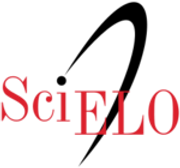"Structure from Motion" Low-cost alternative for the registration of built heritage
DOI:
https://doi.org/10.21754/devenir.v2i4.282Keywords:
Built heritage, lifting recorder, surveying and digital recording, Structure from Motion (SfM)Abstract
The following article is of applicative and instrumental character and was drawn from the results of a series of architectural projects in which the intervention of buildings considered heritage gave opportunity to look beyond traditional methods and processes for graphical documentation . A methodology was developed that involves using the Visual System software Structure from Motion, from which a three-dimensional model is obtained; through a combination of imaging techniques the graphic documentation and survey of pathological lesions of the building is improved. Two resources were optimized to achieve the viability of the projects: time and budget, both scarce. This led to the proposal of a strategy based on methods that allow optimal performance in the process of graphic documentation, ensuring fidelity in the current representation of the building, and it’s injuries and pathologies.
Downloads
References
Changchang, W. (2007). SiftGPU. Recuperado el 15 de 09 de 2014 de http://cs.unc.edu/~ccwu/siftgpu
Changchang, W. (03 de setiembre de 2011). VisualSFM. Recuperado el 15 de 09 de 2014 de http://ccwu.me/vsfm/
Changchang, W., Agarwal, S., Curless, B., & Seitz, S. M. (8 de enero de 2011). Multicore bundle adjustment. Washington.
Furukawa, Y. (17 de julio de 2010). Clustering views for multiview stereo (CVMS). Recuperado el 15 de 09 de 2014 de http://www.di.ens.fr/cmvs/
Hartley, R. & Adrew, Z. (2004). Multiple view geometry in computer vision. New York: Cambridge University Press.
ISTI & CNR. (2 de abril de 2014). Meshlab. Recuperado de http://meshlab.sourceforge.net
Jauregui, L. (27 de junio de 2010). Instituto de Fotogrametría, Faculta de Ingenieria, Universidad de los Andes - Venezuela. http://webdelprofesor.ula.ve/ingenieria/iluis/
Jiménez, A. & Pinto, F. (2003). Levantamiento y análisis de edificios. Tradición y futuro. Sevilla, España: Instituto Universitario de Ciencias de la Construcción.
Josefina, G. L. (24 de enero de 2007). Principios de la fotogrametría convergencia en la fotogrametría arquitectónica. Extremadura, España: Universidad de Extremadura.
Lowe, D. (setiembre de 1999). Object Recognition from Local Scale-Invariant Features. Recuperado de http://www.cs.ubc.ca/~lowe/papers/iccv99.pdf
Pereira, J. M. (diciembre de 2013). Modelado 3D en patrimonio cultural por técnicas de structure from motion. Recuperado de http://www.iaph.es/phinvestigacion/index.php/phinvestigacion/article/view/12/33
Pérez, C. (junio de 2006). Aplicaciones de la fotogrametría convergente en la restauración y rehabilitación de edificios. Recuperado de http://oa.upm.es/5852/
Talaverano, R. M. (enero-diciembre de 2014). Documentación gráfica de edificios históricos: Principios, aplicaciones y perspectivas. Arqueología de la Arquitectura, 11, 26.
Downloads
Published
How to Cite
Issue
Section
License
Articles published by DEVENIR can be shared through the Creative Commons international public license: CC BY 4.0. Permissions beyond this scope can be consulted through the email revistas@uni.edu.pe











